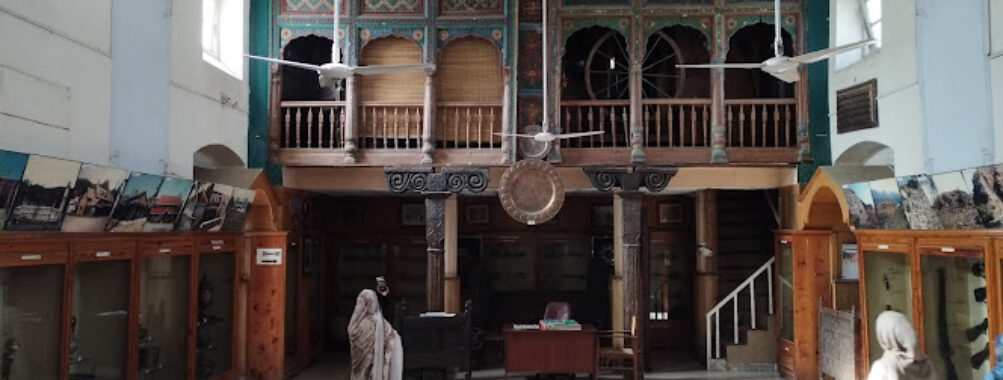
Abbottabad museum
Table of Contents
Description
The Abbottabad Museum is one of those places that doesn’t always make it onto the big glossy travel brochures, but honestly, that’s part of its charm. It’s not a massive, overwhelming museum where you feel like you need three days and a map to get through it. Instead, it’s compact, approachable, and surprisingly rich in history. The museum is dedicated to showcasing the heritage of the Hazara region, and it does so with a collection that feels both personal and deeply rooted in the local culture. You’ll find archaeological finds, ancient coins, pottery, and artifacts that tell the story of civilizations that once thrived in this part of Pakistan. There’s also a focus on the Gandhara civilization, which is fascinating if you’re into Buddhist art and history.
Now, I’ll be honest—it’s not the kind of museum where you’ll find flashy digital displays or interactive touchscreens. Some visitors might even call it a little old-fashioned, but that’s exactly what gives it character. It feels authentic, like you’re stepping into a space that’s been carefully preserved rather than overly polished. The staff are usually welcoming and happy to share insights, though don’t expect formal guided tours. And while it’s not huge, it’s definitely worth an hour or two if you’re the type who enjoys history and cultural exploration. Families often find it a good stop because the exhibits are straightforward enough for kids to enjoy without getting bored.
Overall, the Abbottabad Museum is one of those underrated gems. Some people might walk away wishing it had more modern amenities or a café to linger in afterwards, but most visitors appreciate it for what it is: a quiet, educational space that gives you a glimpse into the layers of history that shaped this region. If you’re already in Abbottabad, skipping it would feel like missing out on a piece of the city’s story.
Key Features
- Collection of Gandhara art and Buddhist relics that highlight the region’s ancient connections.
- Archaeological artifacts including coins, tools, and pottery from various historical periods.
- Compact size makes it easy to explore in an hour or so without feeling rushed.
- Family-friendly environment where children can learn about local history in a simple way.
- Quiet and less crowded compared to larger museums, offering a more peaceful experience.
- Authentic atmosphere with exhibits that feel rooted in local heritage rather than overly curated.
Best Time to Visit
If you’re planning a trip, the best time to visit Abbottabad Museum is during the spring and autumn months. The weather in Abbottabad can get quite chilly in the winter and rather hot in the summer, so those in-between seasons make the whole experience more pleasant. Personally, I’d say late March through May is perfect—you can enjoy the museum and then step outside to wander around the city without feeling drained by the heat.
Weekdays tend to be quieter, which means you can take your time with the exhibits without worrying about crowds. If you’re traveling with kids, mornings are usually best because they’ll be fresh and more interested in exploring. And honestly, having a calm, quiet museum to yourself in the morning is a pretty underrated travel experience.
How to Get There
Reaching the Abbottabad Museum is fairly straightforward if you’re already in Abbottabad. The city itself is well-connected by road to major cities like Islamabad and Peshawar, so most travelers arrive by car or bus. Once you’re in Abbottabad, local taxis and rickshaws are the easiest way to get around, and drivers will usually know exactly where the museum is.
If you’re coming from Islamabad, the drive takes roughly two to three hours depending on traffic, and the route is quite scenic with mountain views that make the journey enjoyable in itself. For those who prefer public transport, regular bus services run between Islamabad and Abbottabad, and from the main bus terminal, you can grab a taxi to the museum. It’s not a complicated trip, but I’d recommend setting aside a full day if you’re coming from outside the city so you can take your time and not feel rushed.
Tips for Visiting
A few practical tips can make your visit smoother and more enjoyable. First off, don’t expect a restaurant or café inside the museum—there isn’t one. So if you’re the kind of traveler who likes to pair museum visits with a coffee break, it’s best to grab something in town beforehand. Abbottabad has plenty of local eateries where you can fill up before or after your visit.
Photography rules can sometimes vary, so it’s a good idea to ask the staff before snapping pictures. Some exhibits may not allow it, and you don’t want to get caught off guard. Also, since the museum isn’t very large, I’d suggest slowing down and really taking in the details of the artifacts. It’s easy to breeze through in 20 minutes, but if you pause and reflect, you’ll find there’s a lot of depth here.
If you’re visiting with kids, bring along a little notebook or sketchpad. I’ve seen children enjoy drawing the artifacts or making notes—it keeps them engaged and makes the visit more interactive. For adults, a small guidebook on Gandhara art or South Asian history can also add context and make the exhibits more meaningful.
Lastly, keep in mind that Abbottabad itself is a city worth exploring beyond the museum. Plan your day so you can combine the museum with a walk around the bazaars or even a short hike in the surrounding hills. That way, the museum becomes part of a fuller experience rather than just a quick stop.
Location
Places to Stay Near Abbottabad museum
Find and Book a Tour
Explore More Travel Guides
No reviews found! Be the first to review!